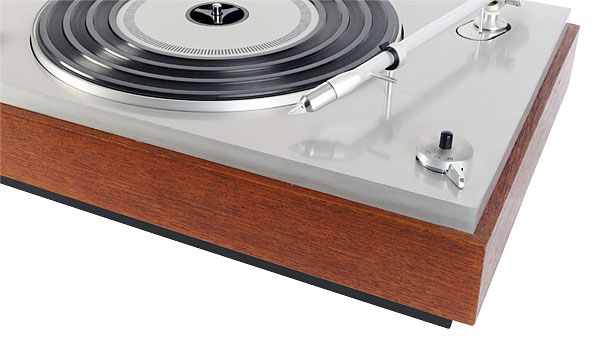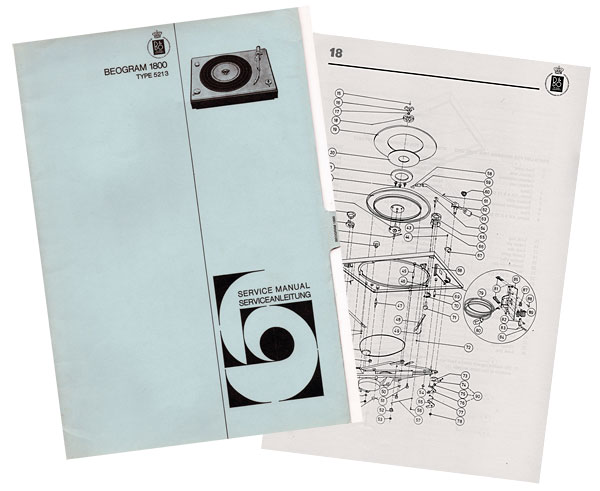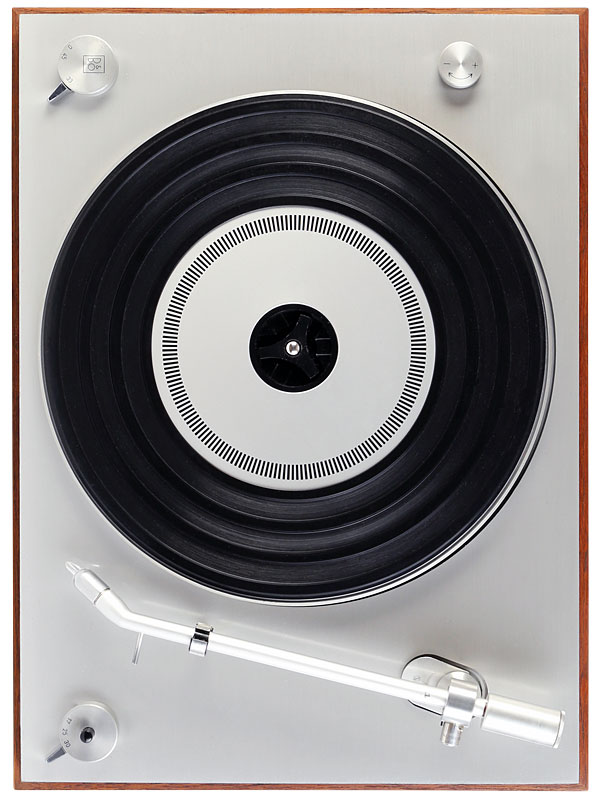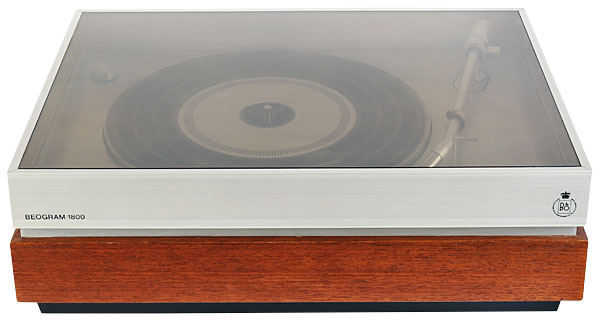B&O Beogram 1800 turntable Page 2
Not all Beogram 1800s had a finger lift and none of them have a cueing lever. Rather, the black button performs a lift/resume function during play. Also, the speed selector lever has a neutral (0) position, presumably to avoid causing a divot on the idler wheel during long periods of disuse.
The centre of the platter contains a pop-up centre for 45rpm singles and a strobe ring for 33rpm; the speed tuning wheel at the back has a heavy action and it is uncertain where the end limits are. In any case it is wise to let the motor warm up for about ten minutes before setting it.

The turntable's SP12 moving-iron cartridge will work with any amplifier having a moving-magnetic input, the 47kohm loading it requires being the same as common MM types. An adapter for the 5-pin DIN pin may be needed though, remembering that pin 2 is the signal ground and the outer shell is the chassis ground.
Our Beogram 1800 had the benefit of being fitted with the optional SP12 elliptical stylus. This no doubt contributed to the deck's subjectively good tracking ability, although as with most B&O cartridges reasonably high ambient temperature is required if top-end attenuation is to be avoided. The factory used to recommend 18oC, and this should be considered to be a minimum as the cantilever's suspension ages.
![]() Tim Listens
Tim Listens
With the aid of the strobe ring the 1800's speed can certainly be set accurately, but the overall W&F performance that can be achieved is limited by the 1950s origins of the motor design – 0.2% (peak) is claimed. This is orders of magnitudes worse than a good direct-drive is capable of, but that's not to say obvious audible wow is a problem in practice. Chris Rea's 'Happy On The Road' [Road Songs For Lovers; BMG 538290841] seemed to swim around slightly in pitch compared to when heard on the recently featured and rock-steady Technics SL-J33 [HFN Jun '20] but the 1800's big, rich and natural sound more than made up for this. Heavy, deep and deliberate bass pointed towards well resolved arm-to-cartridge matching, while the top-end was effortlessly smooth with no hint of the crackles and pops associated with LP listening.

Surface noise was also low, while the drive mechanism, despite it having many rotating parts, was quiet too, even if I did notice an odd hollow-sounding scratchy noise in the silences between the tracks – an under-damped tube resonance in the tonearm perhaps?
Duke Ellington's 'In A Mellow Tone' [Blues In Orbit; MOVLP443] seemed tailor-made to show what a fine turntable the Beogram 1800 is. The piece builds against a perfectly quiet background and at first sounds a little dull, until the trumpet suddenly strikes up. All at once the soundstage opens with the brass sounding vibrant and natural, not 'squarky' and awkward as it can with some arm and cartridge pairings.
The sense of space the SP12 cartridge can conjure up would be impressive for a new design of exotic construction, let alone a seemingly simple one from the '60s. I would have perhaps preferred a slightly tighter sense of focus in the centre of the soundstage, but I can't think of many decks of this era able to rival the 1800 if used as built, with original plinths, arms and cartridges.

Buying Secondhand
Talking of cartridges, the type used in the Beogram 1800 does at least have a replaceable stylus, so the situation is in some ways easier than it is with the later models. Stylus types SP10 (conical) and SP12 (elliptical) are suitable, with the 'universal' SP14 usable at a pinch.
As for the rest of the deck, problems with hardened lubricants in the motor can be expected in those examples that have not been overhauled. The motor is complicated and contains some delicate parts, which means servicing it is not as straightforward as it is with the later B&O models.
Compared to the motor, the automatic linkages are relatively simple but the adjustment points which set them up are difficult to align since they all interact to a degree. Adjustment is not recommended unless unavoidable. Note also that some vertical play in the arm radial pivot is inevitable due to the way that the anti-skating system works. Attempts to adjust this will simply lock up the arm or ruin the bearings.

Finally, the GF4 preamp unit is more difficult to find than the earlier types (which do not fit the 1800). Two variants were manufactured, the second of which has near identical characteristics to the integral phono stage found in the Beomaster 8000 receiver.
Hi-Fi News Verdict
In looking more like a traditional turntable, the Beogram 1800 is viewed by some as one of B&O's ugly ducklings. Yet not all of the company's decks can match this model's solidity and distinctive sound quality. For anyone in the market for a totally authentic 1960s turntable this is a 'must hear', with the caveats that good cartridges can be expensive and that overhauls are not as simple as with some B&O decks.


















































